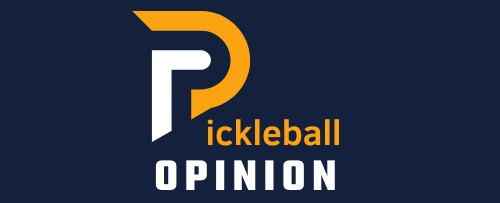21 Best Pickleball Drills For Beginners
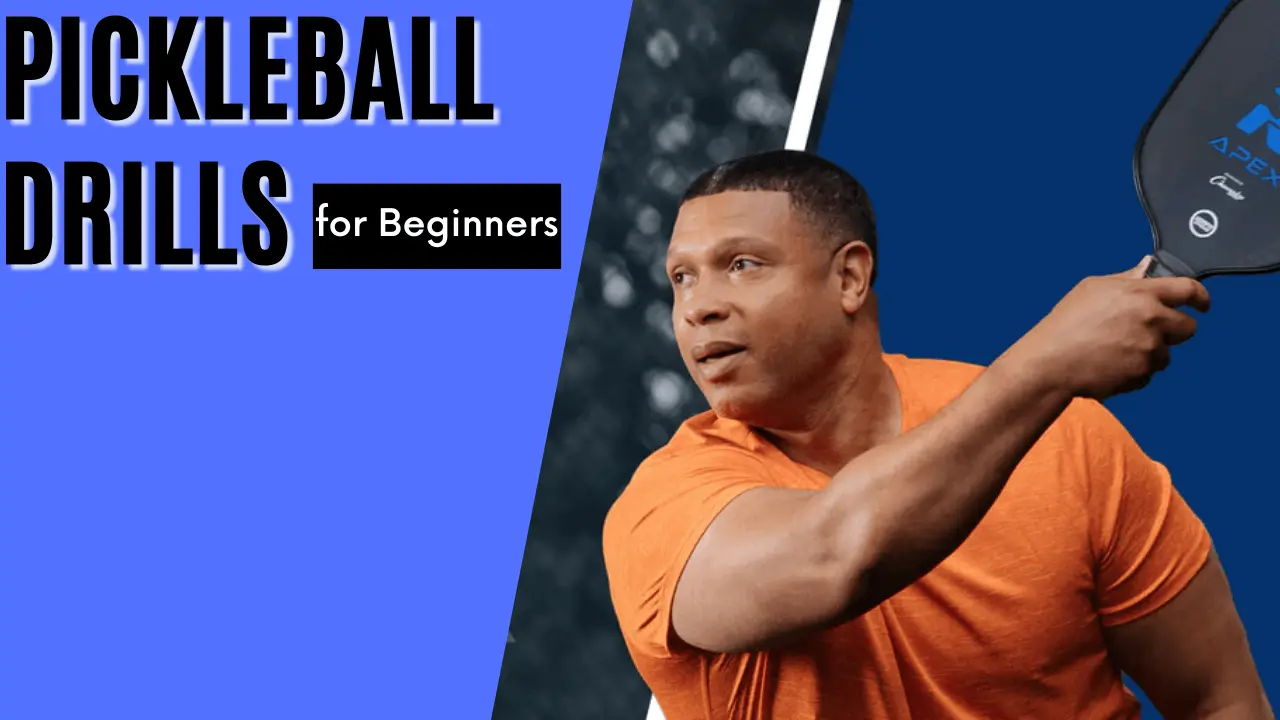
Do you think pickleball drills prove beneficial? Sports can enhance your overall experience, whether you play for fun or to stay healthy and active. Pickleball is the same.
Nonetheless, if the only time you spend on the court is playing matches, you’ll struggle to improve. Spend some time practicing instead. Practice isn’t just showing up and shooting. Practice should have a purpose. It should make sense.
For meaningful practice, drills are needed. In this article, we discuss the most effective pickleball drills for those just getting into pickleball, or those who want to take their game to the next level.
What Are Pickleball Drills?
An exercise designed to isolate and improve a particular skill or set of skills is called a pickleball drill.
To develop the muscle memory needed to engrain the skill as a new habit to become automatic, drills provide many repetitions of the same stroke or small set of strokes over a condensed period, which allows for a large number of repetitions of the same stroke or small set of strokes within a condensed period.
How Significant Are Pickleball Drills?
Players of all skill levels can make better and improve their game by using simple drills. An effective player masters the basics before moving on to the core aspects. Beginners should practice basic pickleball techniques before moving on to more advanced techniques. By skipping over the fundamentals, you will become frustrated and disappointed.
Practice will enable you to understand when to use each stroke. Furthermore, you will be in a position to train your body how to position itself for maximum effect, and with enough repetition, this will become automatic, improving your reaction time. Your feet’ position at each stroke influences your shot’s success.
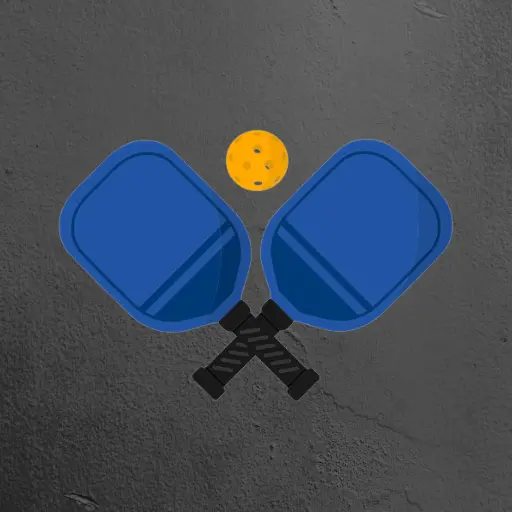
Do You Know?
Drills are often used as part of a larger training program, and they can be tailored to meet the needs and skill level of players of all ages and abilities. By incorporating a variety of drills into their training routines, athletes can improve their overall performance, increase their confidence on the court, and reach their full potential in their sport.
Top 21 Best Pickleball Drills for Beginners
Using these pickleball drills can help you improve your pickleball skill ratings, enjoy pickleball more than you do now, and reach new heights.
DRILL #1 – Tip to grip or paddle bump(Solo Drill)
- Skill Level: 1.0+
- Skill Focus: Hand-eye coordination, Paddle control, Ball control
A tip-to-grip pickleball drill, often called a paddle bump, is one of the most effective ways to feel how the ball bounces off your paddle. In beginner lessons, you’ll learn it. Your pickleball paddle should be horizontal to the ground. Keep the ball under control by gently bouncing it.
Switch the paddle face from top to bottom so that you’re alternating which side of the paddle face is connected to the ball as you build a rhythm. Bounce the ball consistently from tip to base of the paddle face. By doing this drill, you will get a better understanding of the sweet spot and the dead zones that are typically around the edge and base.
This drill is so easy but has so many benefits, and is worth including in your pickleball practice.
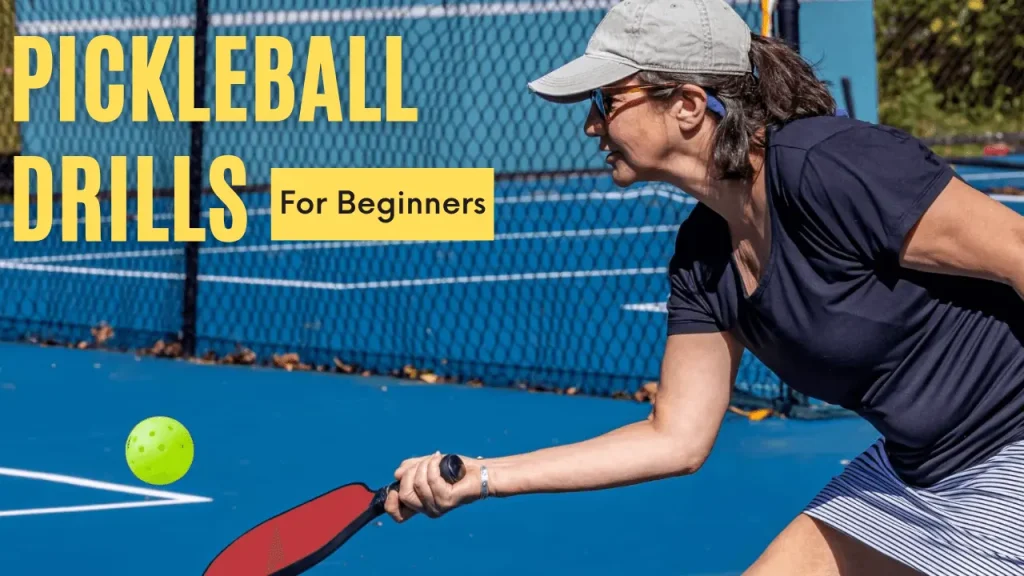
DRILL #2 – Selfie Ball Bounce(Solo Drill)
- Skill Level: 1.0+
- Skill Focus: paddle control, ball control
It is an excellent solo drill to bounce a selfie ball. You will need to hold your paddle horizontally to the ground, bounce the ball off your paddle, and then let the ball bounce off the ground. Then repeat the process. Ensure that your knees are bent and that your body is as square as possible.
Although it is okay to move your feet during this drill, keep your feet in one place to make it slightly more challenging. You should use sufficient control when hitting the ball in order to keep your knees bent, your posture square, and the ball within easy reach of your paddle.You may also incorporate a side-step while bouncing the ball as part of this drill.
DRILL #3 – Pickleball Wall Drills(Solo Drill)
- Skill Level: 1.0+
- Skill Focus: Eye-hand control, Paddle control, Ball placement, Fast hands
One of the best ways to improve is through wall drills. Improve your pickleball game by practicing constantly. The great thing about them is that you don’t need a partner. You’ll need a wall you can stick tape to play pickleball. Make the tape run 34” off the ground on the wall, or if possible, 36” off the ground on the outside edges where the net poles would be, and 34” in the middle.
Mark the ground 7 feet from the wall horizontally. A kitchen line (non-volley line) is 7 feet deep and represents the kitchen’s depth. A full-size pickleball court is 22 feet wide. Lines should not be this long – 10 feet or less is fine. The next step is to tape out a square with the existing tape line as the bottom. This is what I did in the large hall in my house.
As it gets cold and snowy where I live, I am able to practice indoors easily during the winter. It is an effective way to practice dinking and improve your reaction time. Regularly practicing this drill improved my reaction time. Stand 7 feet from the wall (the depth of the kitchen).
Ball inside the square. You can bounce it and then hit it or volley it. Focus on one or the other. Followed by the other shot. You can hit the ball with both your forehand and backhand. Use these two shots alternately. This is another way to practice high shots and lobs.
Keep the ball high above the tape. It will bounce well beyond the kitchen. You need to turn around and hit the ball above the kitchen line against the wall. It is an impressive method to practice your footwork.
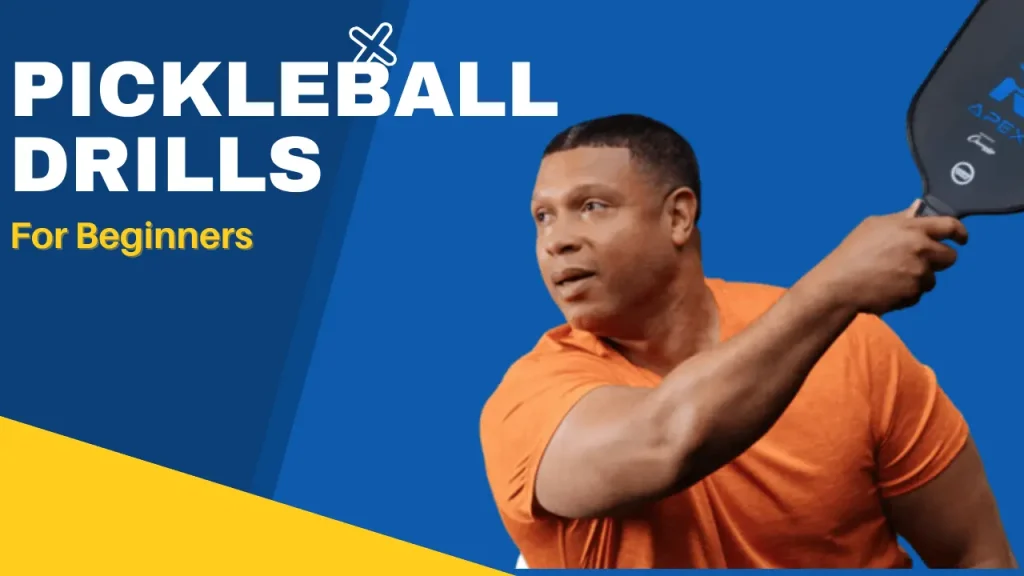
DRILL #4 – Serve Repeats(Solo Drills)
- Skill Level: 1.0+
- Skill Focus: Serve Consistency
A serve-and-repeat drill can be performed alone or with a partner. This drill will be easier if you have someone who can get the balls for you. It is also possible to use a ball machine or bucket of balls, either of which will save you the time of constantly running back and forth.
Playing with a partner allows you to take turns serving and returning. Make sure that the ball lands just inside the baseline at the back 13 of the court when you serve. As soon as you have consistently mastered this serve, practice hitting the ball to the receiver’s backhand, so the ball lands at the back of the court.
Pickleball players are generally right-handed, so practice hitting the ball to a right-handed individual’s backhand. The serve should be practiced from one side of the court until you become consistent, and then switched sides and practice from the other side.
It is recommended that you practice hitting a left-handed person’s backhand if you play regularly with a left-handed player.
DRILL #5 – Half-court dinking (2 or 4 Players Required)
- Skill Level: 2.0+
- Skill Focus: Dink shot, Hand-eye coordination, Ball Placement
A half-court dinking drill is a great way for pickleball players to improve their dink shots. No serve, return of serve, or third shot drop skills are required for this drill. Keep your focus on your dinks. A player is on one side of the net (player A). and on the other side (player B).
The non-volley line is where both players stand. It begins with players A and B dunking the ball over the net. There is a drill that can be performed on one court with four pickleball players, two on each side of the net, hitting the ball straight across the court. Keeping in mind that you are only dinking means you must focus on getting the ball over the net so that it lands within the non-volley zone.
The importance of hitting gentle, controlled balls cannot be overstated. In the case of a ball crossing the sideline, baseline, or centerline of that half of the court, it is out. The same rules apply to hitting in the non-volley zone.
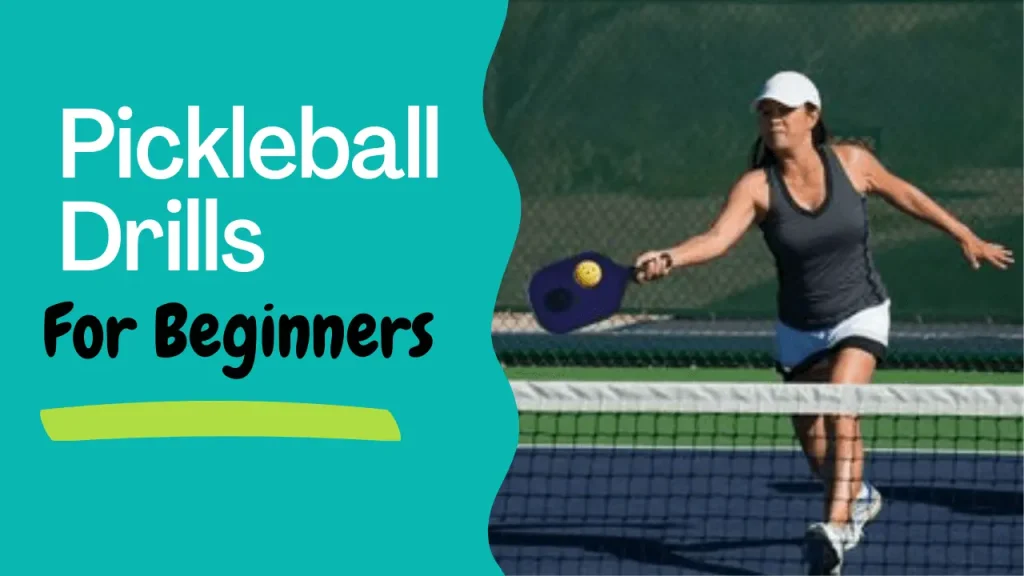
DRILL #6 – Cross-court dinks (2 Players Required)
- Skill Level: 1.0+
- Skill Focus: Dink shot, Hand-eye coordination, Ball Placement
Similar to the half-court dinking drill, the cross-court dinking drill has only two players per court, and you are playing cross-court (diagonal), meaning that if you strike the ball outside the court, it will be out of bounds.
The non-volley line is on diagonal courts. In this game, players must hit the ball across the net and into the non-volley zone diagonally across from them. You can use this drill for a variety of strokes, including groundstrokes and volley shots.
This drill focuses only on dinking, so you do not have to worry about your serving, return of serve, or third shot drop skills. It is possible for you to concentrate solely on your dink shot.
DRILL #7 – Forehand, Backhand dinks (2 or 4 Players Required)
- Skill Level: 1.5+
- Skill Focus: Backhand dinks, Forehand dinks
When performing the forehand and backhand dinks drill, both players stand in the non-volley zone on their respective sides of the net. The first player practices their forehand shot and the second player practices their backhand shot. In order to improve their forehand shot, the player will hit the ball on the other player’s backhand.
DRILL #8 – Triangle Dinks(2 Players Required)
- Skill Level: 2.5+
- Skill Focus: Ball placement, Ball placement variety
Triangle dink drills are excellent for practicing ball placement. The non-volley zone is on either side of the net. You want to keep your opponent moving around the non-volley zone by hitting the ball to three different spots, forming a triangle on the court.
You will need to keep moving if you dink at different locations, and your opponent will have to anticipate your shot’s direction if you dink at multiple spots. You will have a difficult time achieving that goal if you keep placing the ball in different locations.
This drill is ideal for practicing forehands and backhands. It is likely that your opponent will also hit the ball on the other side of the net in a triangle. There will therefore be a lot of practice opportunities available to you.
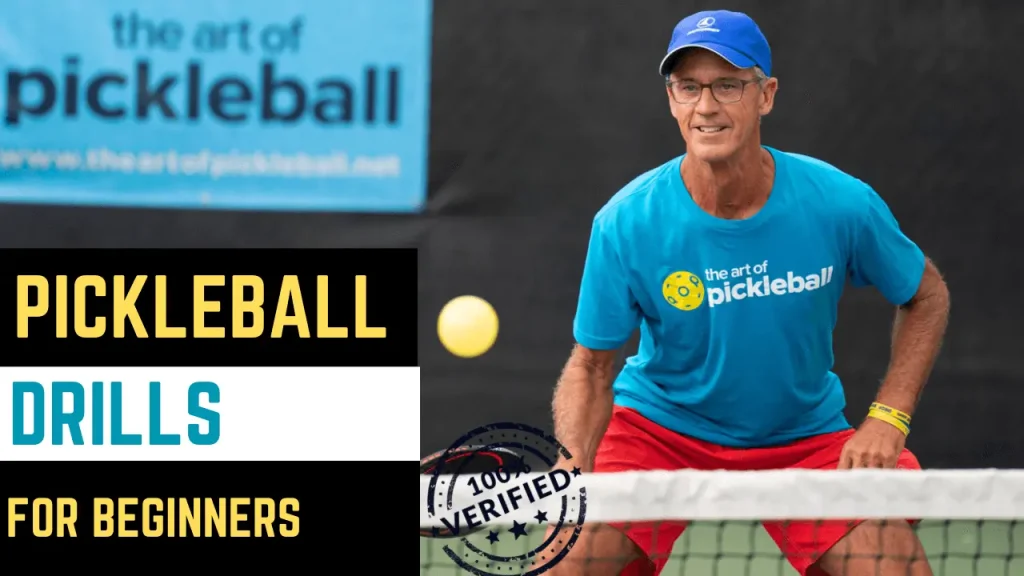
DRILL #9 – Crosscourt forehand and backhand dinks(2 or 4 Players Required)
- Skill Level: 1.5+
- Skill Focus: Backhand dinks, Forehand dinks
In the crosscourt forehand and backhand dinks drill, players stand in the non-volley zone diagonal to one another. The first player practices his forehand shot while the second player improves his backhand shot. The player practicing his or her forehand shot will hit the ball on the backhand of the other player.
DRILL #10 – Alternating forehand and backhand dinks(2 or 4 Players Required)
- Skill Level: 1.5+
- Skill Focus: Backhand dinking, Forehand dinking
Similar to the previous drill, this drill requires players to alternate between hitting forehands and backhands. As part of the alternating forehand and backhand dinks drill, players stand in the non-volley zone diagonally opposite each other.
It is customary for each player to play alternately hitting a forehand and backhand shot. A player hits the backhand of the other player with a forehand shot. After that, they alternate shots.
DRILL #11 – Half-court kitchen volley shots
- Skill Level: 1.0+
- Skill Focus: Forehand, Backhand volley-dinking
Half-court kitchen volley shot drills involve both players standing by the kitchen and volleying the ball. It is imperative for players to avoid bouncing the ball and to return shots that are controlled and stay within the non-volley zone when returning shots.
It is an excellent drill for practicing backhands, forehands, one-handed volleys, and two-handed volleys.
DRILL #12 – Block and volley(2 or 4 Players Required)
- Skill Level: 2.0+
- Skill Focus: ball control and handling
The block and volley drill will assist in improving ball control. Hold up your paddle as the ball passes over the net. The ball should be allowed to hit your paddle without moving or exerting any force. You should be able to pop it off your paddle and over the net. Next, your practice partner should let the ball block off their paddle in the same manner, without applying any force or swing.
In the non-volley zone, you can use it for just about any ball with momentum coming over the net.
DRILL #13 – Half-court groundies(2 or 4 Players Required)
- Skill Level: 1.0+
- Skill Focus: forehand, backhand groundstroke fundamentals
It is possible to use one pickleball court for four players with the half-court groundstroke drill. The players hit groundstrokes with their forehand or backhand and attempt to keep the ball in their half of the court.
A rally can be played as a warm-up, for points, or to determine how long it can last. After a game or time has ended, players can rotate one position.
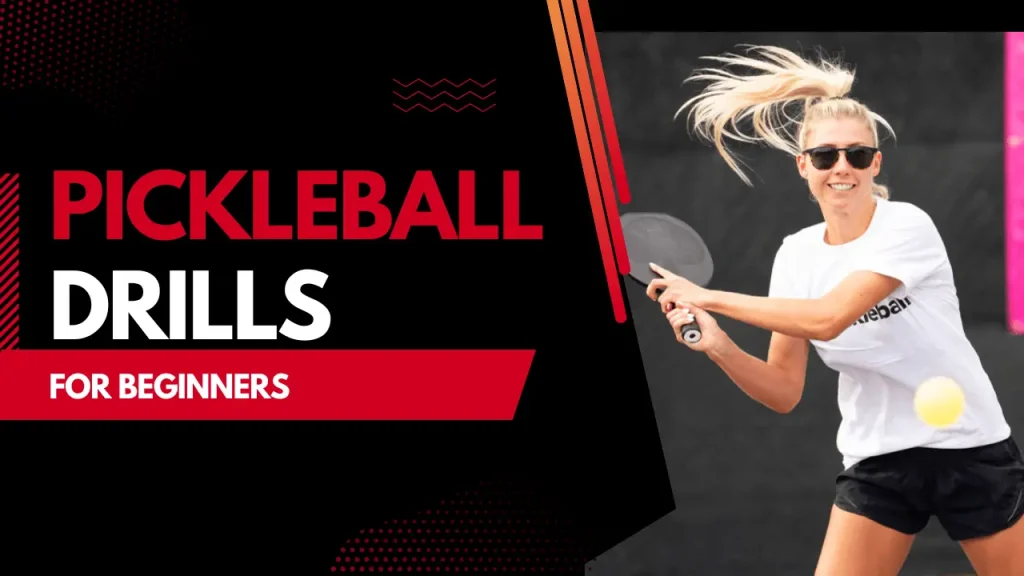
DRILL #14 – Skinny singles (2 or 4 Players Required)
- Skill Level: 1.0+
- Skill Focus: all the skills
Playing skinny singles involves each partner standing on their respective side of the court and playing pickleball as you normally would, but only using the side of the court that you are standing on. You serve directly across the net instead of diagonally.
Skinny singles are played in the same manner as regular singles but only on one side of the court. Accordingly, there are only court lines on one side of the court and they include the sideline, baseline, centerline from the baseline to the net, as well as the non-volley zone line.
In the event that the ball reaches outside these boundaries, it is out. As only half of the court is being used at a time, two teams may play at the same time, which can lead to balls going outside the correct side of the court, but it is an effective way to get more players on the court.
DRILL #15 – Kitchen to baseline hits (2 or 4 Players Required)
- Skill Level: 1.5+
- Skill Focus: Paddle & Ball control, Ball Placement
To practice the kitchen to baseline drill, one player stands at the baseline, while the other stands by the non-volley zone line on the other side of the net. It is the baseline player who hits the ball over the net and the non-volley zone player who returns it.
This is a great drill for getting to know your paddle and practicing hitting the ball in the desired direction. Practicing from both the baseline and non-volley zone line is recommended.
DRILL #16 – Back and forth(2 or 4 Players Required)
- Skill Level: 1.5+
- Skill Focus: Ball distance control, Ball placement, Drop shots
In the back-and-forth drill, both players begin at the kitchen line. This game involves one player dinking the ball over the net and the other player returning it. In order to return the ball, the returner takes a step backward and the player at the net will hit the shot slightly deeper.
Each time the player is drilled, he or she will move back and the drill will continue until the player reaches the baseline. In other words, the player will now hit a third shot drop. As soon as the player at the baseline makes the third shot drop, they begin walking toward the kitchen line with every shot.
The person who was previously doing the drilling becomes the person being drilled. As a result, they now begin to back up with every shot and work their way back to the baseline.
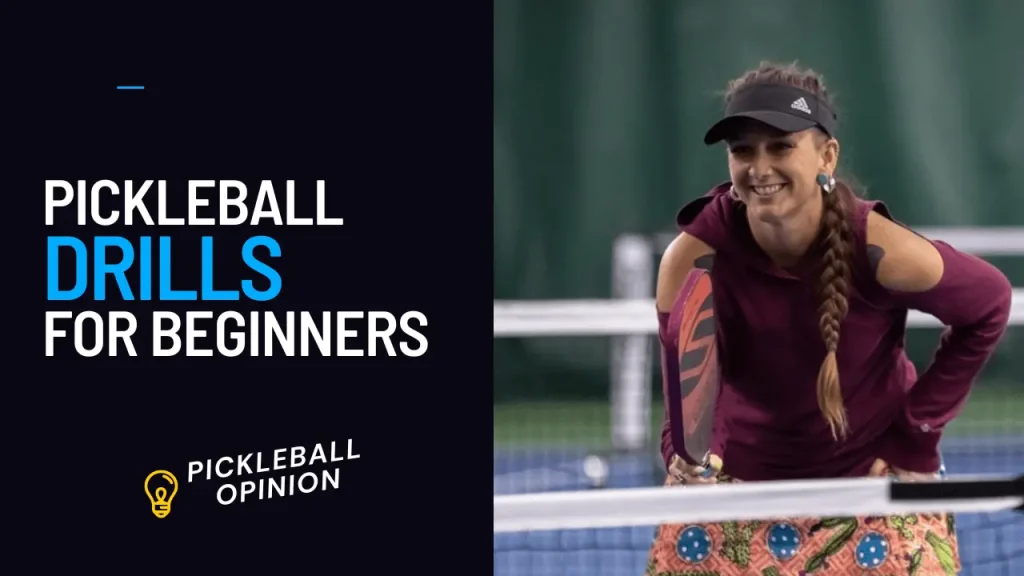
DRILL #17 – Kitchen runs (2 or 4 Players Required)
- Skill Level: 2.0+
- Skill Focus: Moving to the kitchen, Third shot drop
In this drill, players practice transitioning from playing at the back of the court to playing in the non-volley zone. One player stands at the non-volley zone line and the other at the baseline on the other side of the net.
During the baseline game, the baseline players will hit the ball to the non-volley zone line players, who will attempt a third shot drop (which lands in the kitchen area of the opponent).
Afterward, the player in the kitchen will move to the non-volley zone. It is ideal for practicing both and building muscle memory at the same time. For new players, getting to the front of the court and dropping the third shot are the most challenging skills.
Despite this, the player already in the kitchen will do their part to prevent this from happening. To achieve this goal, either a hard ball or a long ball may be used. Check out the pickleball rules to learn more.
DRILL #18 – Third shot drop(2 Players Required)
- Skill Level: 2.5+
- Skill Focus: Ball placement on the third shot
The drill will help you build muscle memory so you can hit a great third shot. There is no doubt that the third shot is the most crucial shot in a game, and this drill will assist you in improving it.
It is important that when you do the third shot drop drill with your partner, he or she should stand in the non-volley zone, and you should be at the back. During the execution of the pendulum swing, the ball rises over the net and enters the non-volley zone of your opponent after your partner has received it from you.
DRILL #19 – Reflex Training(2 or 4 Players Required)
- Skill Level: 2.0+
- Skill Focus: Training reflexes for quicker response
You will improve your ability to hit a ball accurately by practicing this reflex drill. Standing in the non-volley zone, you and your partner perform controlled shots back and forth. You may then surprise your partner with a hard drive. Their paddles should be used to block the ball.
The purpose of this drill is to train your reflexes and to help you practice blocking shots with control. Quick reflexes are an essential skill when playing pickleball. Basically, you must always respond quickly to a ball.
DRILL #20 – Side-stepping(Solo Drill)
- Skill Level: 1.0+
- Skill Focus: Fitness conditioning, Footwork, Speed & Agility
An impressive way to improve your footwork is to perform this drill. Lay out four cones on the ground, a couple of feet apart. Start making lateral movements between the cones. The first repetition should be performed slowly, and the speed should be increased with each repetition.
There is also the option of taping four Xs on the ground in the same manner. After you have moved over all four cones, you will side-step (lateral movement) back to the cone where you began. Your speed should increase with each repetition, but you should only move as fast as you are able to control your feet. By side-stepping, you will raise your heart rate and force your feet to move faster, which will help you focus on controlled footwork.
It is also possible to continue lateral movements over each cone, back and forth. If you perform this drill regularly, you will be able to increase your fitness level and improve your footwork, which will provide you with an advantage on the court.
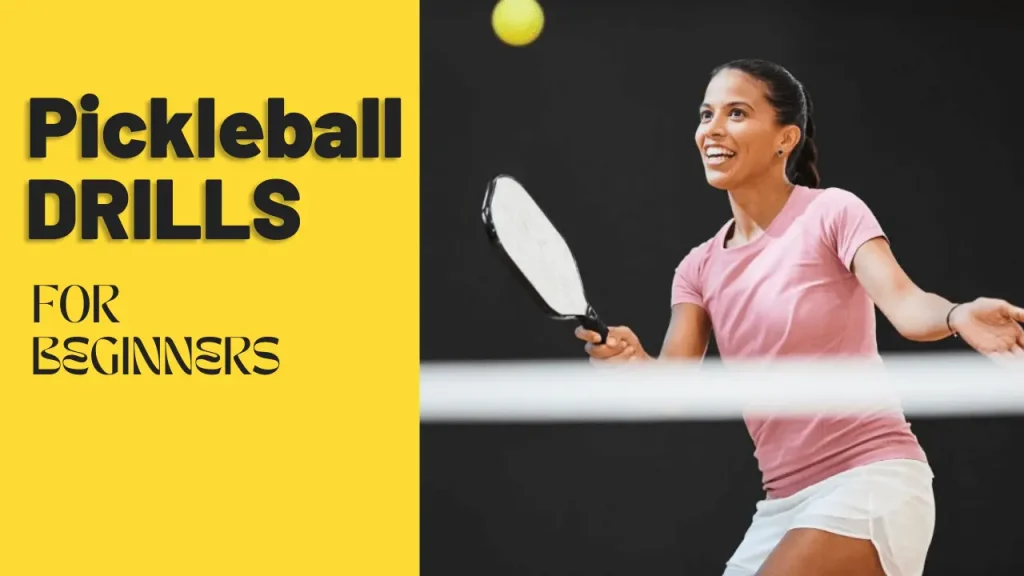
DRILL #21 – Figure 8 (Solo Drill)
- Skill Level: 1.0+
- Skill Focus: Fitness conditioning, Footwork, Speed & Agility
The drill is an excellent way to increase your heart rate and improve your footwork at the same time. It will be necessary for you to line up two cones or any other item about three feet apart on the ground. In addition to the tape, two Xs can also be placed on the ground.
The player should move around the court in a figure-eight pattern. Gradually increase your speed until you can maintain foot control and a manageable speed.
Final Thoughts
Hopefully, these pickleball drills for beginners will help you improve your game and help you practice more. Improve your pickleball game quickly by practicing pickleball drills. Practice consistently to improve your game. Solo drills and partner drills are available.
Practice with purpose is the key to improving the necessary aspects of mediocre players’ games. Our pickleball drills can help you improve your pickleball game if used consistently.
